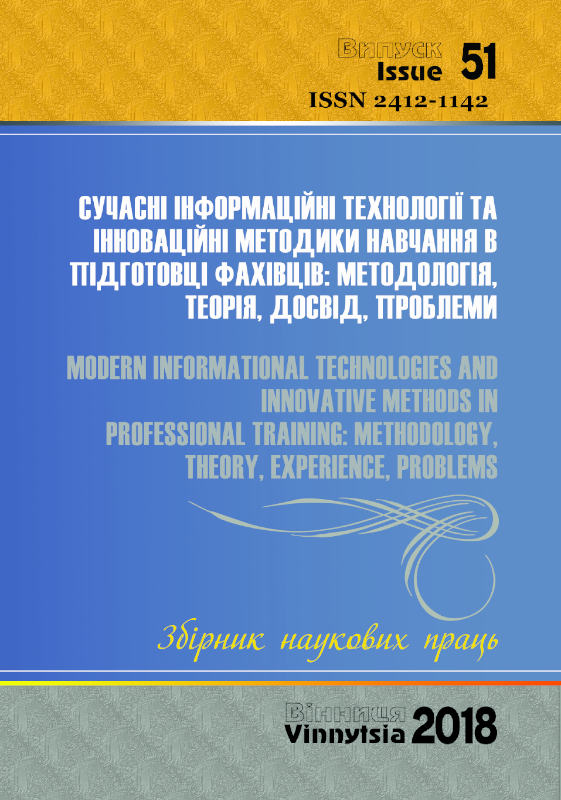USE OF MODERN INFORMATION TECHNOLOGIES IN LEARNING A FOREIGN LANGUAGE, WHICH CONTRIBUTES PROFESSIONAL SELF-DEVELOPMENT OF STUDENTS
Keywords:
modern information technologies, innovative technologies, didactic functions, traditional teaching of foreign languages, language skills, the need for professional self-improvement, didactic tasks, gadgetsAbstract
The paper deals with application of the modern information technologies in the study of foreign
languages. In the paper it has been presented the comparative characteristic of traditional teaching and use of modern
information technologies in the study of foreign languages. It should be noted that information technology is the world
in which modern youth lives and application of the modern information technologies in English classes encourages
students not only to study foreign languages but also to professional self-improvement. Application of the information and communication technologies in foreign language classes gives students access to a large number of different types
of information. In the paper it has been performed the didactic functions which are achieved the study of foreign
languages applying the modern information technologies. It has been considered the possibilities of applying the
modern information technologies in the study of foreign languages. The article gives examples of sites and computer
software that can be used at such lessons as: "Foreign language for professional purpose", "Foreign language for
business communication", "Scientific communication in a foreign language" and others. The paper defines three stages
in which all computer software should be implemented. Information technology allows students to learn languages
using the forms, methods and techniques of learning that are much closer to the modern life of students and
encourage students to study foreign languages and develop professionally.
Downloads
References
Гальскова Н. Д. Сучасні технології навчання іноземної мови / Н. Д. Гальскова . – М: Арті-Глоса 2000 . – 192 с.
Гончаренко С. Український педагогічний словник. – К.: Либідь, 1997. – 376 с.
Дичківська І.М. Інноваційні педагогічні технології / І.М.Дичківська. – К.: Академвидав, 2004. – С. 338-339.
Загальноєвропейські Рекомендації з мовної освіти: вивчення, викладання, оцінювання. / Наук. ред. укр. Видання доктор пед. наук, проф. С.Ю.Ніколаєва. –К.: Ленвіт, 2003. -273 с.
Карамишева Т. В. Вивчення іноземних мов за допомогою комп’ютера / Т.В.Карамишева .
– С.П.: Союз, 2001 . – 158 с.
Книга вчителя іноземної мови: Довідково-методичне видання / Упоряд. О.Я.Коваленко, І.П.Кудіна, Харків, ТОРСІНГ ПЛЮС, 2005, -240 с.
Коваленко Ю.А. Використання інформаційних технологій у навчанні іноземних мов.// Іноземні мови. - 1999. - No4. - с. 37-41
Коновалов О.Ю. Інтернет і його вплив на розвиток закладів середньої, професійної та вищої освіти Америки і Європи. // Нові технології навчання: Наук.-метод. зб. – Вип. 33. – К.; НМЦВО, 2002.
Downloads
Published
Issue
Section
License
Copyright (c) 2018 А. Крохмаль

This work is licensed under a Creative Commons Attribution 4.0 International License.

